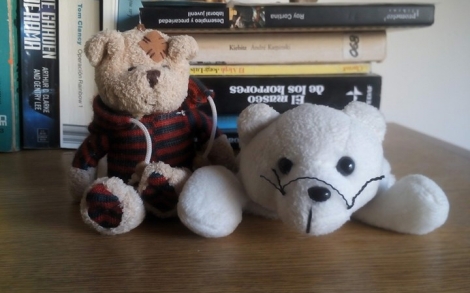
Apollo Cerwyn speaking in the presentation of the new ‘leftist superfront’, the Democratic Party (HG)
Following a prolonged wait, the leaderships of the Left Alliance and the Socialist Caucus (the dissident Jensist wing of the National Artists’ Guild) have officially launched the newest party of Sabia and Verona: the Democratic Party (HG, for horói geñkurago, lit. “party for the government of the people”). This marks the official end of the Left Alliance, the longest-lived leftwing political party in Sabia and Verona’s history, and represents a strong blow for the Artists, who have now lost a considerable part of their membership as well as a seat in Parliament.
In a public presentation held in Alios today, Left Alliance (and now HG) leader, Apollo Cerwyn, introduced the new party’s manifesto before a large crowd of supporters and members. The Democratic Party is the result of a long-planned convergence of leftist forces in the Kingdom (a ‘leftist superfront’), and right from the start it is expected to become a serious threat to the governing Liberals in the coming 2018 election.
Described by Cerwyn as a “pluralist, popular, and nationalist” force, the Democratic Party now counts with seven MPs and two governors of regions (Suipom Goyo of Gonn and Liam Sanfloss of Lycem) who have already pledged themselves to the new party. Alios mayor Étienne Boulin, who left the Artists’ Guild in June, is yet to confirm whether he will join the Democrats.
The Sahoedang’s worthy successor
Since the execution of the Haronos Plan in 2015, the party system in Sabia and Verona has become increasingly compact. In reversal to the trend that existed from 2012 to 2014, parties have tended towards merging, not splintering. Examples of this include the merger of the weakened Initiative for Democracy into Unity in 2015 and the marriage between the old Left Alliance and Bakinn (what was once Convergence and Amity). The new Democratic Party is now the bigger (some would argue the only) leftist party in Sabia and Verona, and so it’s only natural to draw comparisons with the Sahoedang, the defunct socialist party of Napoléon Bleuberrie.
The Sahoedang, too, was a motley alliance of socialists, communists, radicals, social democrats and other assorted leftists who fell under the large shadow cast by Bleuberrie, the charismatic leader who governed Sabia and Verona as Prime Minister in two separate occasions. Admittedly, the diversity of ideologies and thoughts is much less prominent in this occasion, as the development of Sabia and Verona’s political identity over the years has left little space for macronational currents of thought, even if they survive well enough in rhetoric.
Additionally, the old Socialists and the new Democrats stood (and stand) in antagonism with the same enemy: Unity/the Liberals.
The Sahoedang and the Unity Party (both then new parties with clearly-defined opposing ideological bases) maintained the two-party system that dominated Sabioveronese politics through 2012 and 2013. Now, with the weakened Artists pretty much out of the picture (their poll numbers prophesy their worst result since the party’s formation), the Democrats will present themselves as the only credible alternative to the Liberals, who are the descendents of the old Unity Party.
Even when it comes to symbolism, the Democrats appear to be consciously evoking the spirit of the Socialist Party: they don red banners and white seven-pointed stars, the traditional symbols of the old Sahoedang.
Matters of PR
The new party’s leadership has already been elected, in an open seven-day “congress” held the past week. The popular leader of the Left, Apollo Cerwyn, will remain at the helm as leader of the Democrats; there was an apparent consensus regarding this decision between both members of the Left and the Socialist Caucus. When it came to the deputy leadership, however, the race was a bit more contested: Leftists Hierba Kebragi, Andreina Rossini and Narcissus Clyne, and the caucus’ Snø Jens-Galieri and Suipom Goyo all presented themselves as potential candidates to serve as Cerwyn’s second-in-command. In the end it was Goyo who took the position, mostly as a way to cement the caucus’ integration into the party. Jens-Galieri eventually relented to pressure and retired himself from the race, as the ongoing corruption investigation against him is apparently seen as a “liability” within the inner circles of the new party.

The newest political marriage in SiV: Apollo Cerwyn (left) with Snø Jens-Galieri, the dissident Artist who helped form the Democratic Party
The Democrats’ party manifesto and presentation all appeared to departure from traditional Leftist rhetoric. Vows to fight for direct democracy, the environment, pacifism and secularism all remain part of the party’s program, but the common allusions to class struggle, international plush brotherhood and the democratic ownership of, well, everything, are absent from the new party’s discourse. This could be a way to attract voters who may still be considering to vote for the Artists’ Guild in 2018.
